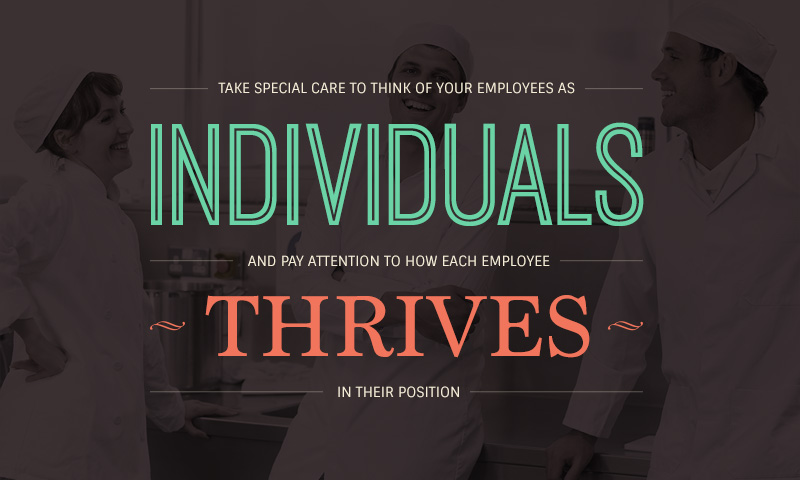How to Effectively Manage Different Generations

Different generations communicate differently and are motivated by different managing techniques. This makes it difficult for you as a manager and requires special attention to make sure that everyone is on the same page and that some employees aren’t given an unfair advantage for something they cannot control. Managing employees of different generations requires patience, balance, and careful observation of the needs and behaviors of each generational group. You will have to adjust your managing skills to work for a variety of situations and well as facilitate communication between people who typically don’t always see eye to eye. Here are some techniques you can utilize to manage your part-time employees of varied generations.
Create a collaborative environment
In a mixed generation working environment, it’s important that all employees feel comfortable around each other and can benefit from each other. Create mixed shifts or teams in which younger employees can look to older ones for wisdom and guidance, and older generations can look to younger ones for fresh perspectives and innovative solutions. Be sure that all employees understand the unique value they can bring to the team. It might be natural for age-specific cliques to arise, so it might be up to you to create a shift schedule that forces different generations to be open to each other at first. Allow older workers to mentor or train in new, younger employees to begin the collaboration from the beginning, and give younger generation employees the opportunity to share their expertise with the older generation as well.
Understand the different needs of each generation…
Typically younger generations are more attracted to a learning environment that utilizes interactive technology and adapt better to technology-integrated systems. Older generations tend to prefer handbooks and more traditional forms of training. Younger generations have high expectations and like to hear frequent (positive) feedback about their progress. This generation enjoys special assignments and responsibilities such as taking over social media duties or organizing store displays. Older generations appreciate traditional hierarchy and status within a company, and may appreciate being placed as shift managers or team leads. Generation X (born between 1964-1980) typically place high value in productivity. Millennials (born 1980-2000) are typically huge multi-taskers and become bored easily. Older generations may have specific scheduling needs due to family obligations, and younger generations may need to work around earning a degree. As a manager, it’s important to recognize these traits and manage each generation accordingly.
But be careful about encouraging stereotypes
While it’s important to recognize that different generations will need to be approached differently for training, communications, and scheduling, do not make the assumption that each employee of the same generation will act in the same way or have the same sorts of difficulties and needs. Instead, take special care to think of your employees as individuals and pay attention to how each employee thrives in their position. Offer some different training choices to appeal to different generations, but don’t make the choice for the employee of which type of training they wish to receive. There are plenty of people from older generations who love technology and plenty from the younger generation who may appreciate a traditional training approach.
Keep communication open
Each generation has a different set of values and work ethics that may not translate well between generations. This might result in miscommunication and confusion in the workplace, so it’s important that all employees understand that open communication is very important in your workplace, and that if anyone is uncomfortable with any aspect of their work environment, they should come to you to discuss the situation. This may mean as a manager that you have to work as mediator between employees of different generations to decode confusion and help each employee understand a frustrating situation. Be sure to instill a variety of communication methods to appeal to each generation: announcing an open door policy, having a suggestion box, and having regular periodical reviews for times of one-on-one conversation. Educate your employees so that they are aware of the fundamental differences between each generation and that the strengths of each generation are all important to the company.
Understand what motivates each employee
“Hard work” means something different for different generations. Some believe that hard work is the number of hours put in (more equals better), others believe that hard work is getting the work done in as short of time as possible. Some people need instant gratification, others are happy for recognition at any time. With different generations, it can sometimes be difficult to determine what motivates each person, especially if you as a manager are managing people outside your own generation. Don’t be afraid to talk to potential employees about this during the interview or training process to determine what conditions they feel motivate them the most. Some employees will be looking to gain all the knowledge and experience they can to push themselves ahead in a set career path, others will be earning money to pay off student loans, and still others are looking for a little more cushion before they retire. Ultimately, everyone wants a job that besides paying the bills, will interest them and give them the respect they feel they deserve, it’s just up to you as a manager to determine how best to demonstrate that to your varied generations of employees.
How do you handle the generational differences among your employees? Share your tips and experiences in the comments section below.






